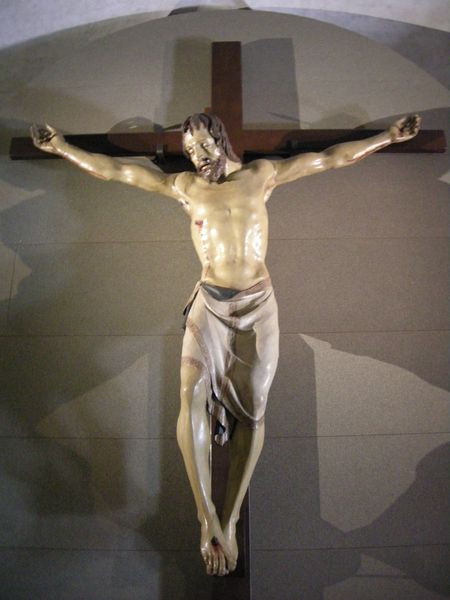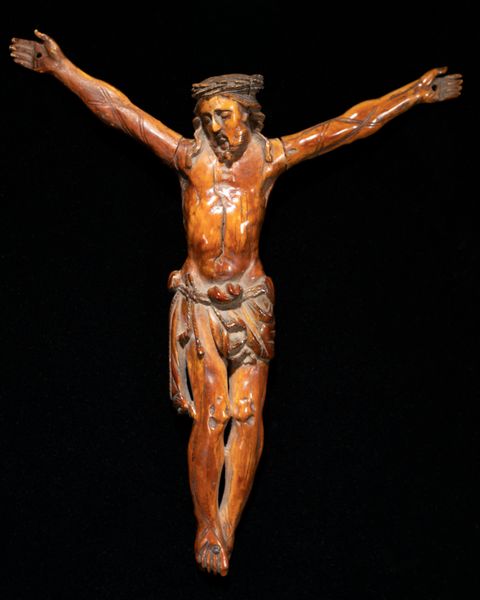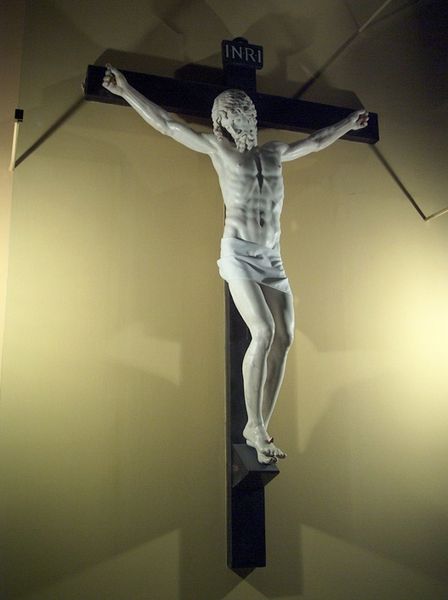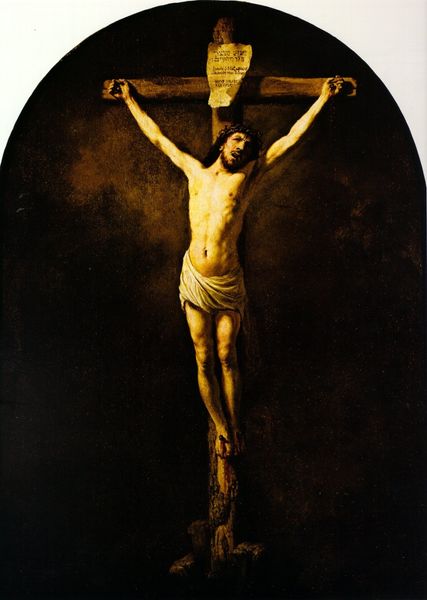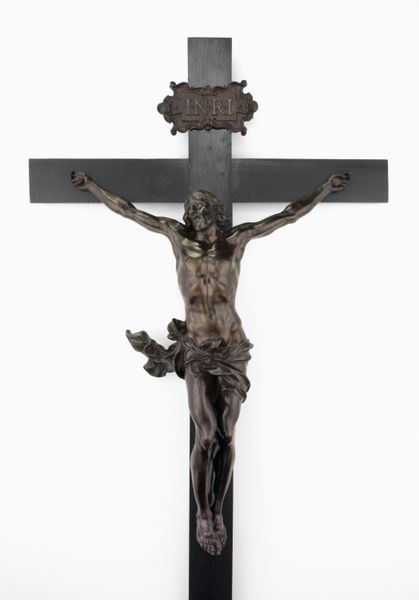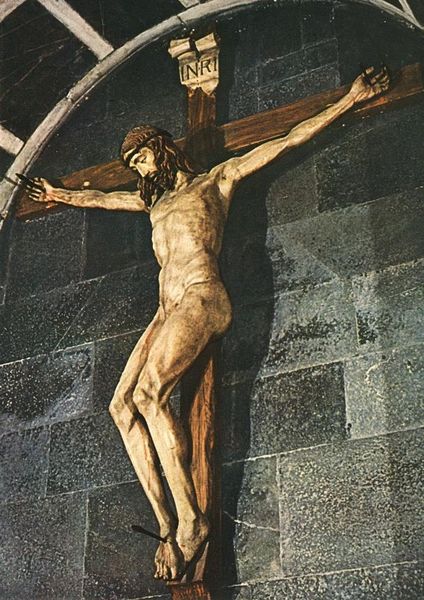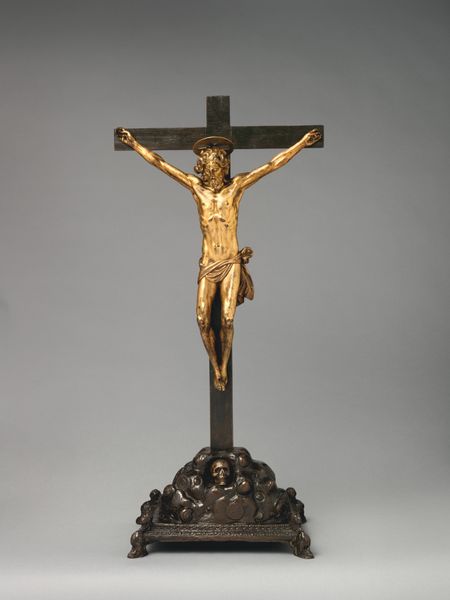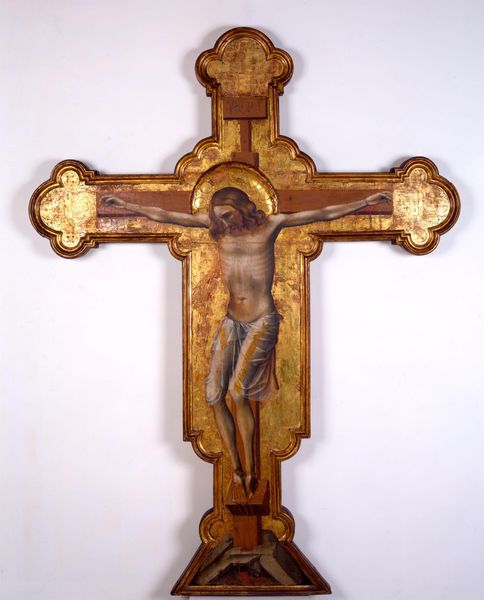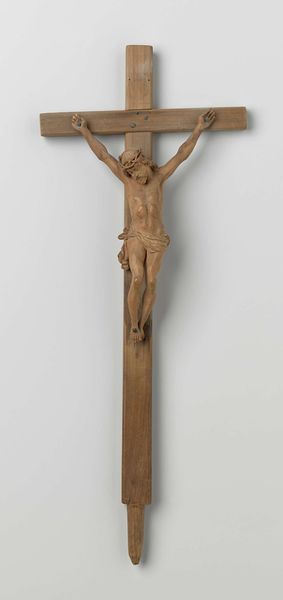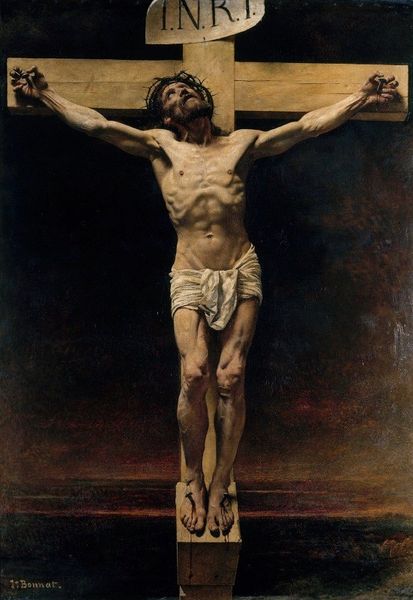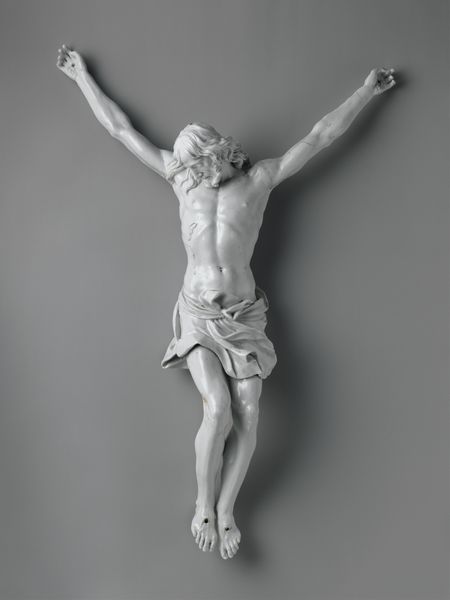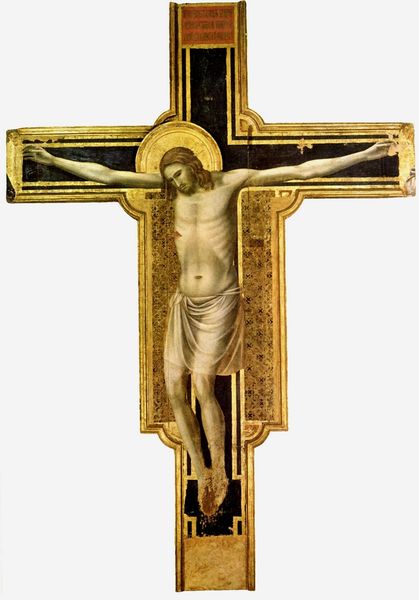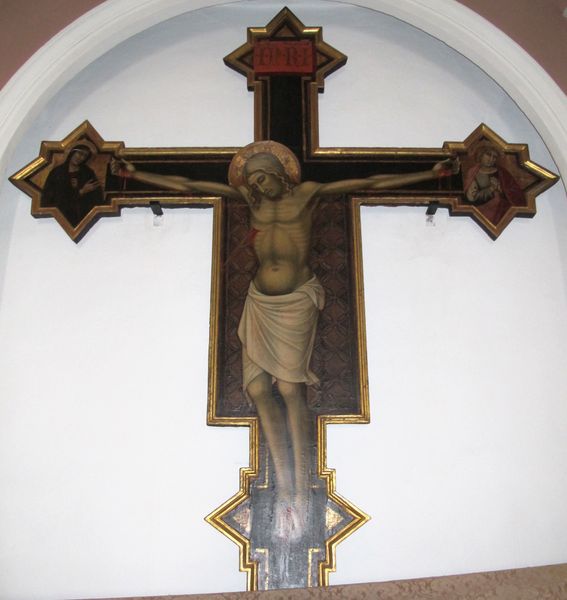
sculpture, wood
#
baroque
#
sculpture
#
figuration
#
sculpture
#
wood
#
crucifixion
#
history-painting
#
nude
#
christ
Copyright: Public domain
Curator: Let's turn our attention to this compelling sculpture: "Crucifixion" by Johann Georg Pinzel, created in 1758. It’s a remarkable example of Baroque sculpture. Editor: The figure seems to twist, almost writhe. It's an immediate visceral impact. I notice how lean and stretched his limbs appear—how was it made? Curator: Pinzel worked primarily with wood, a readily available material in his region. His works often reflect the social context of religious piety, made for churches and personal devotionals in areas deeply rooted in Catholicism. The intense emotionalism aligns perfectly with the Baroque aesthetic commissioned by patrons who expected art to deliver spiritual intensity. Editor: It's fascinating to think of the artist carving this from a block of wood, the labor involved in achieving such detail. There is very realistic surface texture throughout, contrasting with flat stylized features elsewhere, but how does that square with the social demand for emotionalism you noted? Curator: Well, consider that intense emotion can require realistic forms. The patronage system in Baroque art fostered a dialogue between the social need for religious fervor and the means of fulfilling that demand by capable artists. Think about how Pinzel could push formal elements, like a body in extremis, for its emotional force, because his social world of wealthy patrons permitted such representations. Editor: It also speaks to skill in material processes, this command of wooden media. You cannot capture realistic texture on cloth, rope and hair if you lack the tools. The church or wealthy patrons likely bought tools used in producing that vision too. Curator: Absolutely, and it illustrates how Pinzel and the Baroque contributed to the religious and cultural landscape. Works like these served not only artistic purpose, but had their own public, cultural function during a crucial period for church reformation. Editor: Understanding his work now in light of production gives us insight. The emotional impact emerges as an intersection between technique, skill and prevailing demands from culture that made works like "Crucifixion" so ubiquitous. Curator: Precisely. By exploring both the art's socio-historical background and technical qualities, we can deeply understand this emotionally complex piece and the historical forces behind its creation. Editor: Agreed. Considering both context and construction enriches our insight significantly beyond seeing an artifact to also viewing human relations at work within its making.
Comments
No comments
Be the first to comment and join the conversation on the ultimate creative platform.
